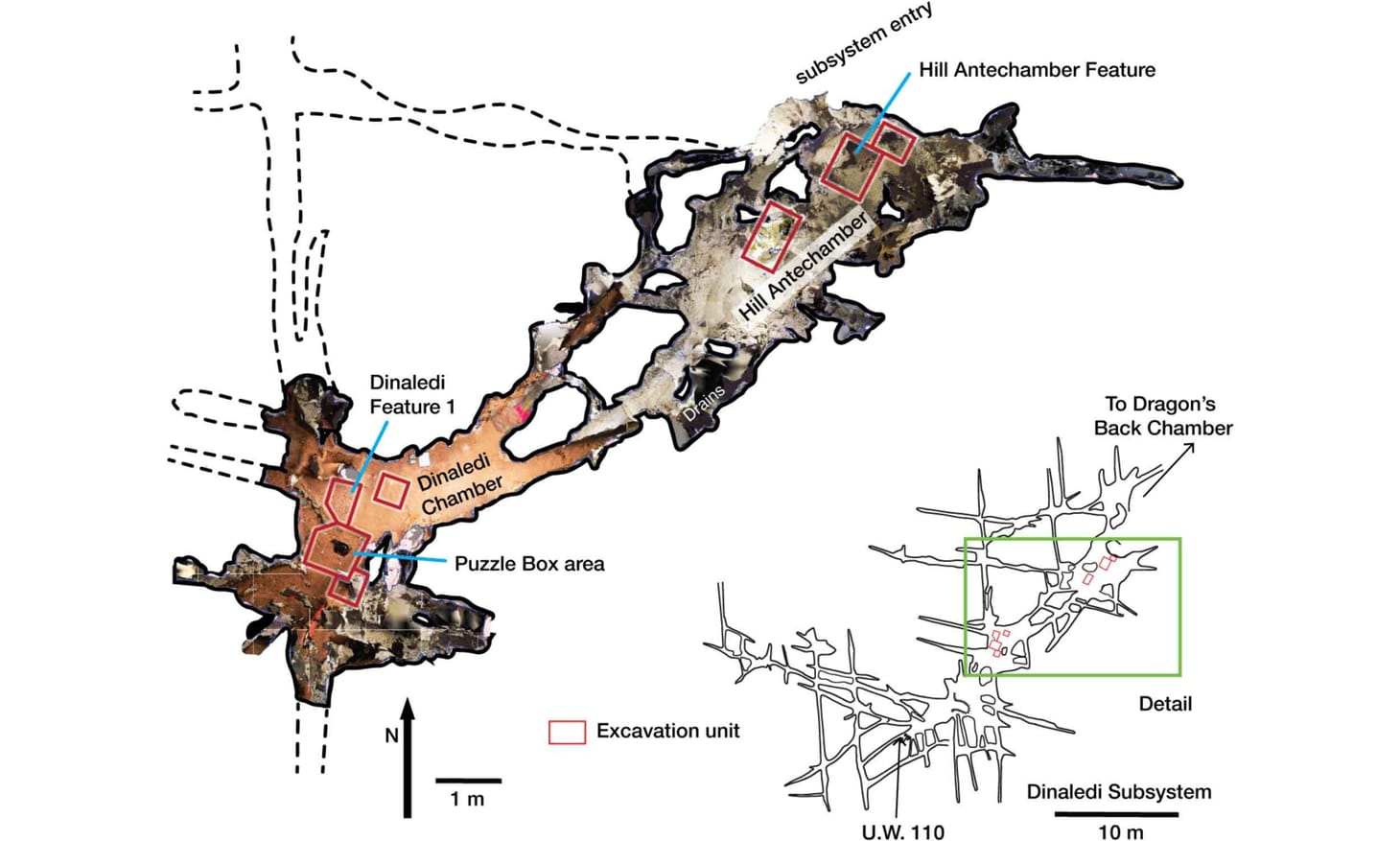How Homo naledi got into the Dinaledi Chamber
New research from Dirk van Rooyen gives the most detailed look ever at the entry path into the deepest parts of the Rising Star cave system.
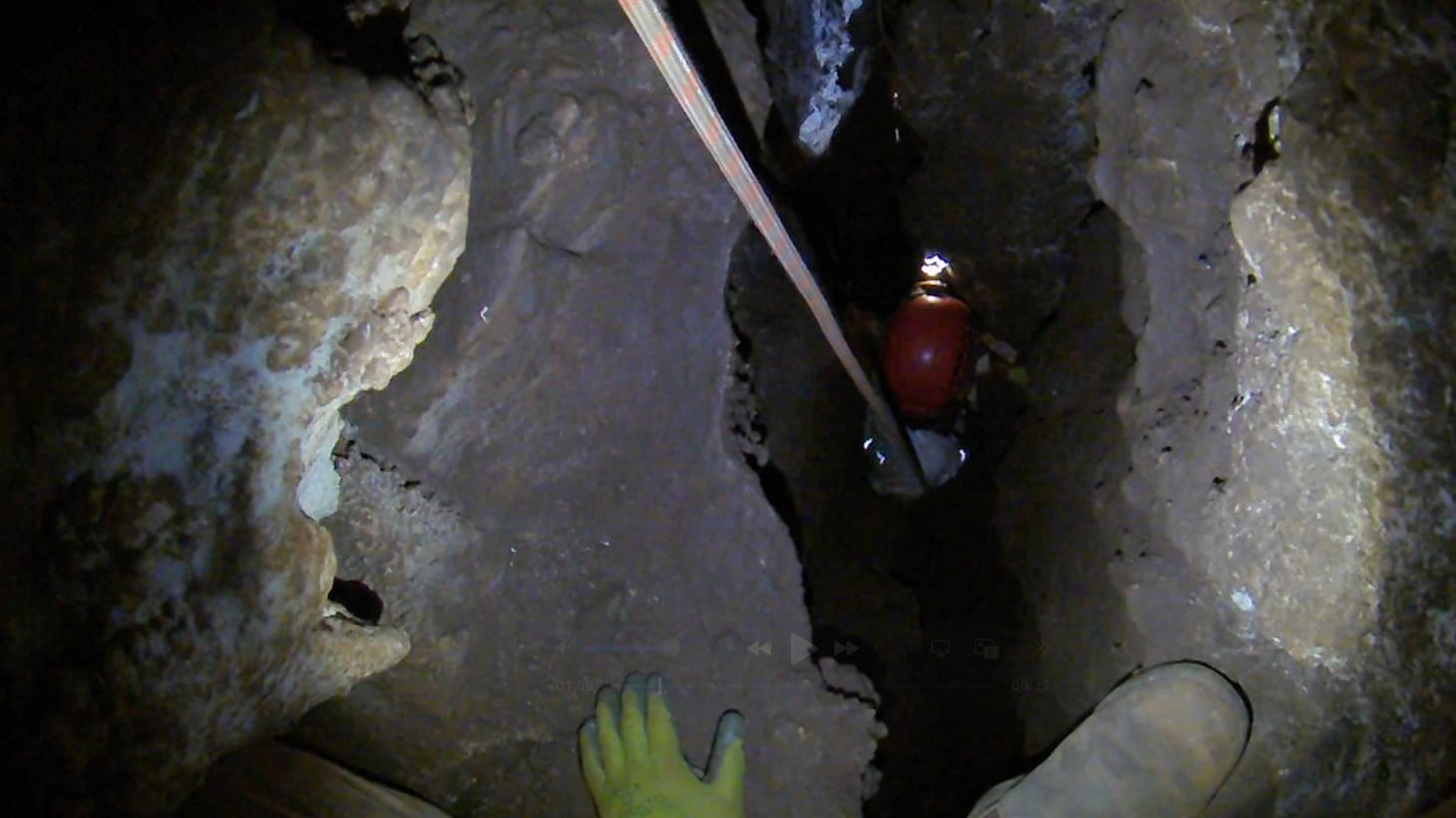
One of the most enduring questions about the discoveries of Homo naledi fossils in the Rising Star cave system: How did these ancient hominins find their way into the remote Dinaledi Subsystem of the cave?
This area today is 30 meters below the surface and more than 100 meters from the closest surface entrance, via a series of vertical descents, tight turns, and squeezes of less than 30 cm. The most extreme part of this route is the final descent. After climbing a narrow ridge of rock called the Dragon's Back, cavers must then descend through a tight fissure network with passage widths as small as 18 cm, going down a total of 12 meters before landing in the Hill Antechamber. To return outside, they must do all of this in reverse, climbing the 18 cm fissure passage. This passage became known as the Chute. The route can only be attempted by those whose bodies are small enough to pass through these extremely tight constraints.
New research led by Dirk van Rooyen has now provided the most detailed look at this tight series of fissures. The new map shows the intricate complexity of the spaces. To make this clearer, we have designated this network of spaces as the Chute Labyrinth. The name focuses on the idea that it takes some knowledge of the space to make one's way through it.
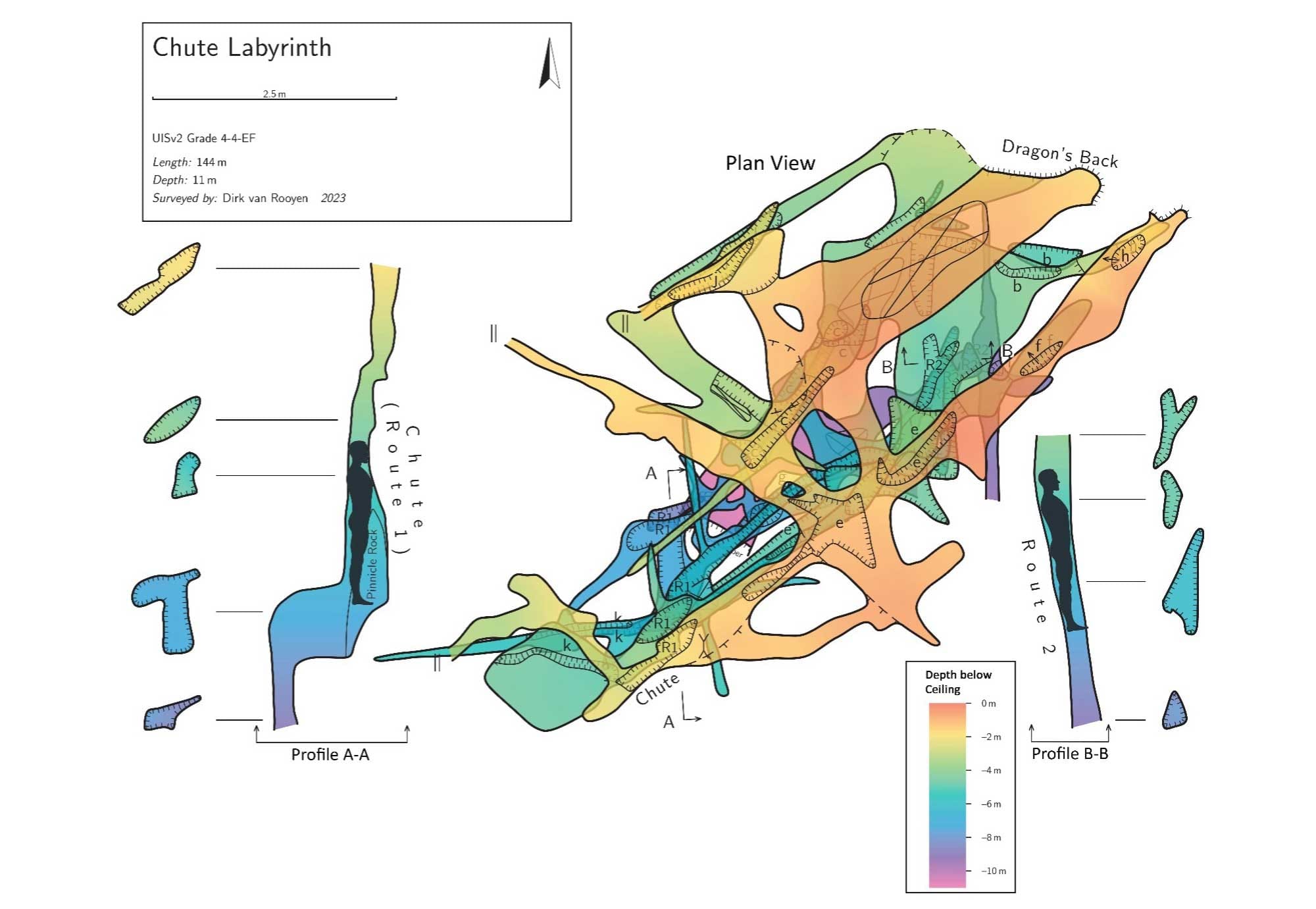
Mapping the Chute Labyrinth
Most people who read about the cave have taken away the main idea that there is a challenging vertical climb. True, but incomplete. The climb is not a chimney, nor a single passage.
I have been at the top of this network looking downward. Looking into the narrow network of passages, the intricacies of these spaces are a challenge to describe. You can see down into several gaps in the rock, most too small to accommodate a climber. Their jagged edges are forbidding. The fissures extend unseen as a series of small interconnected spaces within the dolomite bedrock, in places only a few centimeters in width.
These tiny spaces do not accommodate the tools that the team has applied in some larger spaces in the cave. We have detailed LIDAR and photogrammetric mapping of parts of the Dinaledi Subsystem, and a courser LIDAR representation of the main pathway down from the surface into the Dragon's Back Chamber. But these technologies are not practical within the smallest of the passages.
In order to fill in this part of the map, Dirk carried out exhaustive surveys of the fissure network. He used a system of survey called the Paperless system, which relies on an integrated laser measurement device, inclinometer, and compass, the Leica Disto X2. The data from this device are transferred in real time to a tablet, with outputs that can be further processed using computer mapping software.
Of course, to map these spaces, Dirk and his team had to find ways to get into some of the hardest-to-reach parts of this network. Squeezing into spaces to extend the survey, Dirk was able to record distances, orientations, and angles through every part where a sightline could be established. His diagram showing the hundreds of resulting sightlines shows a web of spaces, roughly corresponding to six levels of survey, with around 2 meters of vertical separation.
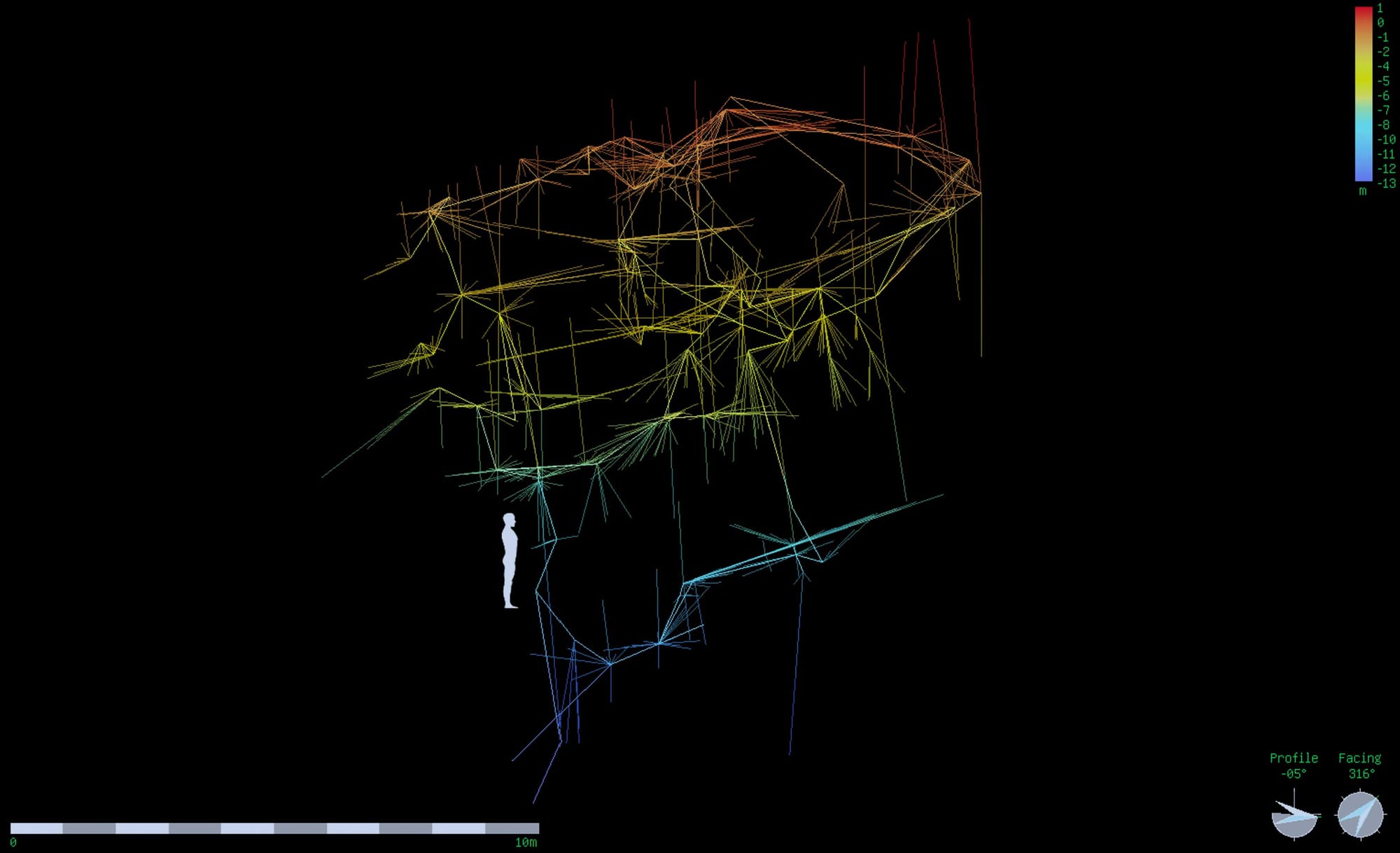
This network is made up of small cracks in the rock, but it is extensive. It stretches more than ten meters in its maximum dimension, southwest-to-northeast, around three meters in the perpendicular dimension, and twelve meters in height. There are two routes through it that humans can take: the one Dirk and the team usually take known as the “Chute”, and another route that is less comfortable to climb and descend.
For Homo naledi, there would have been these routes and possibly a few other alternatives. This species was smaller and skinner than most of the people who have been part of teams in the Rising Star cave system. What today's cavers can do is not a good guide to what a smaller species, better adapted and practiced at climbing, might have done.
Homo naledi's passage
Dirk's mapping together with a wider range of exploration across the last decade have answered many questions that we had about these spaces when the H. naledi fossils were first discovered.
Caves change over time. Speleothem formations can form and grow, making passages narrower or closing them off entirely. Rockfalls can fill passages with rubble. With 241,000 years or longer since H. naledi bodies were deposited in the Dinaledi Subsystem, one important question has been whether the Chute or adjacent spaces has changed in dimensions.
Dirk was able to localize all significant flowstone and speleothem formations in the fissure network. Three flowstones are present in the area, but none of these impinge upon the available routes that today's cavers use through the network. No rubble fill or other input are blocking passages in this area. The conclusion is that H. naledi encountered a very similar system of passages here as today's team.
Another important question relates to the Dragon's Back structure. Today's team climbs up the top of this narrow, high fin of rock in order to reach the entry point of the Chute Labyrinth. The chert banding within the Dragon's Back shows that at some time in the past this rock was around 60 cm higher than today. Jess Robbins and coworkers (2021) dated a flowstone near the Dragon's Back and hypothesized that the movement of the rock coincided with the flowstone's age between 225 ka and 290 ka. A key question is whether the displacement of this rock would have changed the way that H. naledi may have accessed the deeper spaces.
Dirk's mapping makes clear that the Dragon's Back has nothing to do with the shape of the Chute Labyrinth. Getting into the fissure network requires a climb regardless of whether the Dragon's Back structure was in its original, higher position, or its current position. While today's teams use safety ropes and harnesses for the Dragon's Back climb, it is not particularly difficult with abundant handholds and footholds. Far from closing off access deeper into the cave, the move of the Dragon's Back to the current position made no difference to the Chute Labyrinth or access into the deeper Dinaledi Subsystem.
One last question concerns the possibility of dropping bodies or other materials down through the fissure network. Early in our work, many people thought that Homo naledi bodies might have been dropped from the top of the Chute, causing them to build up at the base where they would subsequently have decomposed and formed a natural talus of skeletal remains and other material. Our excavation work made clear that this is not the case. There was no pile of bodies. The remains within the Hill Antechamber, near the entry point to the subsystem, were configured as a shallow burial similar to other remains much further in the Dinaledi Chamber. There was a consistent use of these spaces by Homo naledi.
Dirk's survey adds significant information to this picture. While the route known as the Chute includes a significant vertical climb, it also has a four-meter horizontal component. Nothing dropped from the top of this fissure network can make it into the Hill Antechamber passively by gravity alone. There was no possibility of dropping bodies.
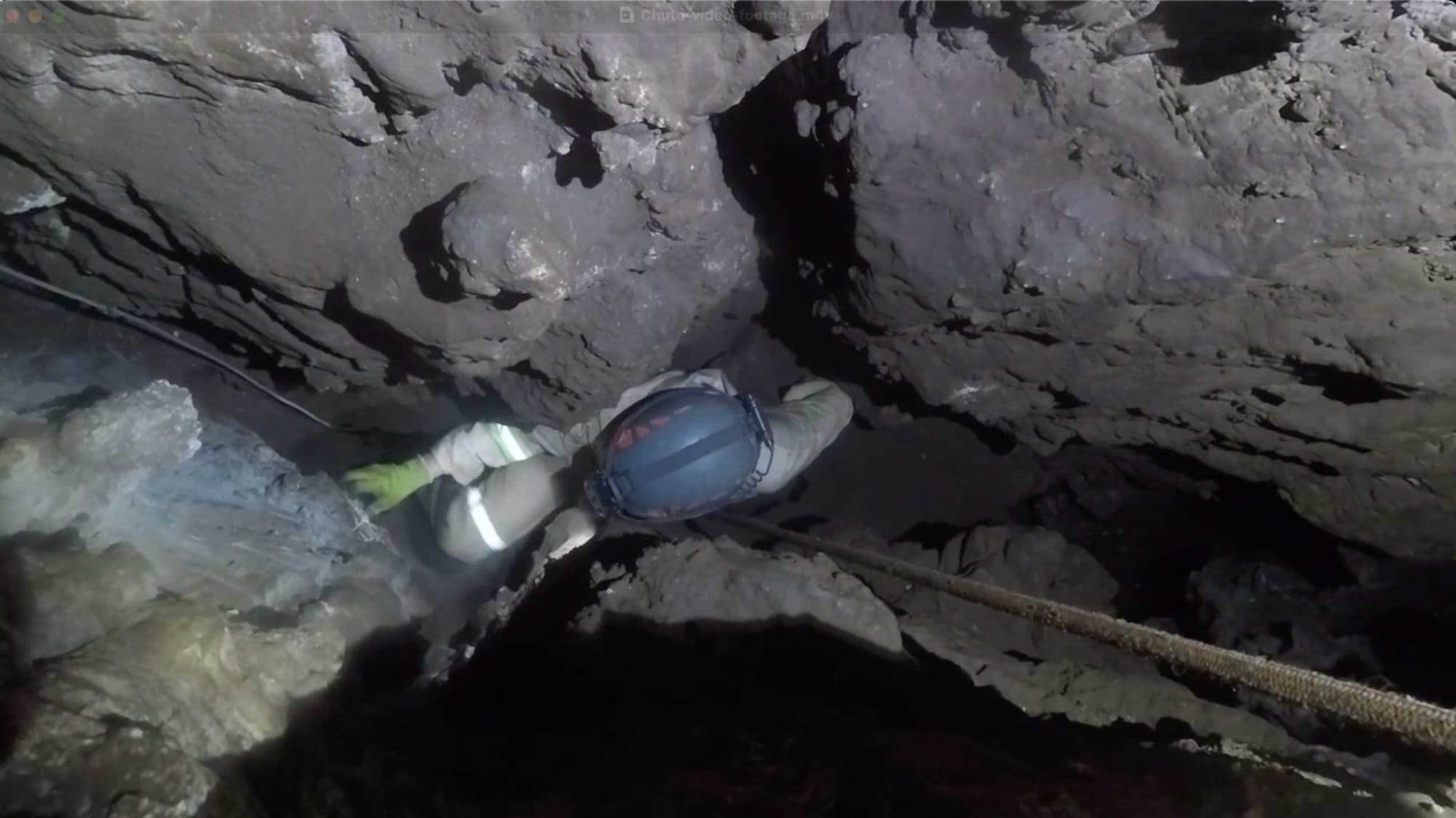
Could there be another entrance?
Some people reading about the discoveries of this ancient hominin deep in the cave system have wondered: Could there have been some other entrance that made it easier for Homo naledi than it is today? It's a great question.
From the beginning of our work, there have been several lines of evidence about the pathways from the surface into the Dinaledi Subsystem. The Dragon's Back Chamber contains sediments that include external sediment input: small rocks, gravel, and sand-sized grains that came into the cave from outside. Those are present within calcified breccia deposits and in uncalcified buildups of sediment. Paul Dirks and collaborators in 2015 hypothesized that this external sediment input could have come from the area of the Postbox Chamber, proposing that there may once have been a surface entrance in that area, later choked by the buildup of sediments into the cave.
The Dinaledi Subsystem does not have any of this external sediment input. During the last 700,000 years, as the sediment units in this subsystem formed, there was no pathway for sediments to come into the subsystem from the surface. The Chute Labyrinth and the adjacent sill prevent sediment input into Dinaledi from the Dragon's Back Chamber.
Homo naledi did enter this subsystem. Very few other animals did so. At this point, exploration of the subsystem has uncovered evidence of a barn owl, rodent teeth and some rodent bones, a baboon tooth from sediments below H. naledi, and some baboon material from the surface. Thus far it is not possible to place any of these into the same time period as H. naledi. The low representation of other animals suggests that the entrance to the subsystem was highly restrictive for the history of the formation of the sediments.
All this together shows that the subsystem did not have another, easier-to-access entrance during the time that H. naledi existed or since. The recovery of its remains in the Lesedi Chamber, more than 140 meters distant through the cave from Dinaledi, is another reflection of their widespread use of the system. Homo naledi moved through deep parts of this cave system when it wanted.
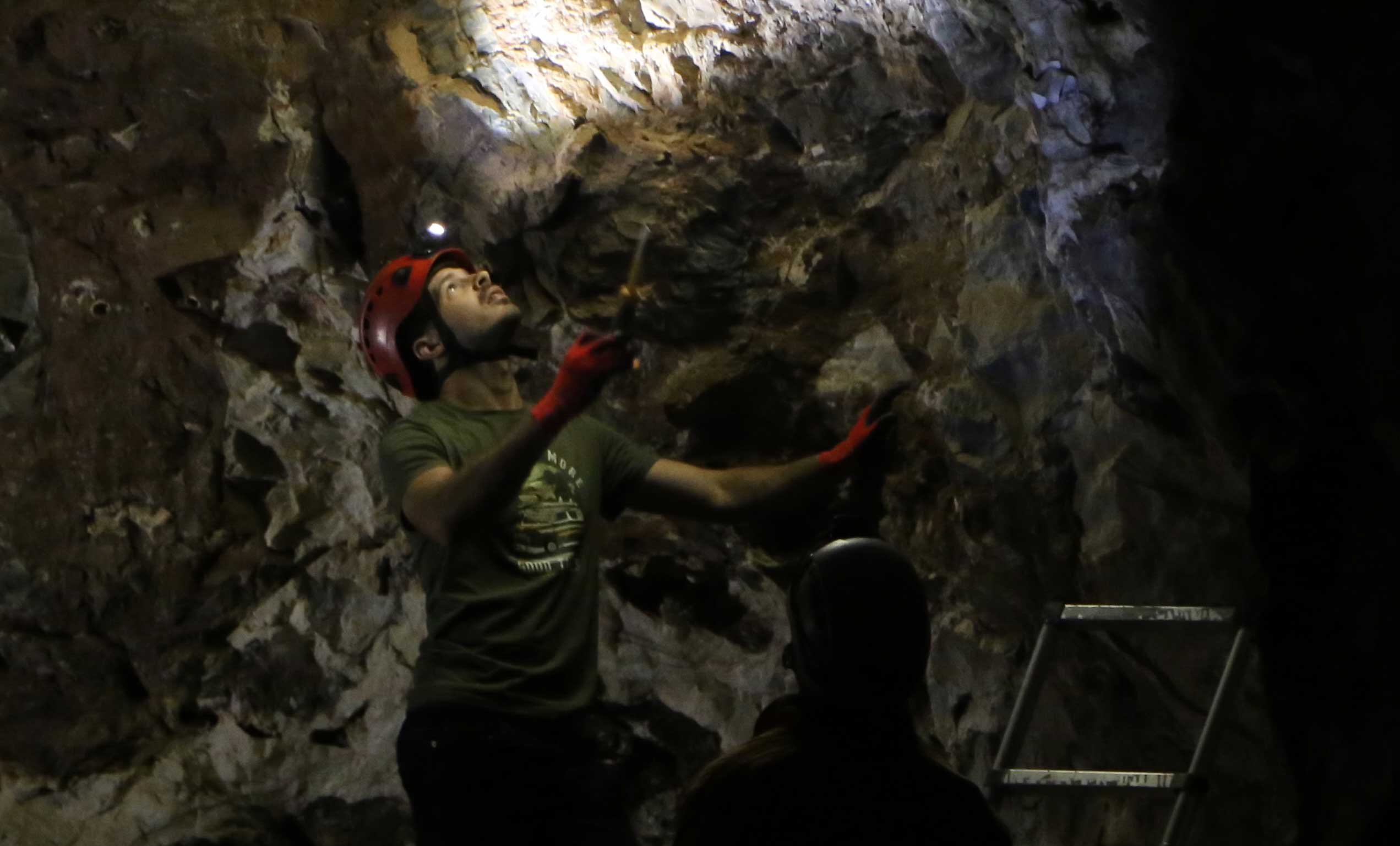
Notes: The recent eLife reviews of our work on Homo naledi burials include a fairly detailed overview of the history of analysis of these pathways into the Dinaledi Subsystem. This open access work is worth reviewing by anyone who wants more information about how we understand these spaces today.
References
Berger, L. R., Makhubela, T., Molopyane, K., Krüger, A., Randolph-Quinney, P., Elliott, M., Peixotto, B., Fuentes, A., Tafforeau, P., Beyrand, V., Dollman, K., Jinnah, Z., Gillham, A. B., Broad, K., Brophy, J., Chinamatira, G., Dirks, P. H., Feuerriegel, E., Gurtov, A., … Hawks, J. (2025). Evidence for deliberate burial of the dead by Homo naledi. eLife, 12. https://doi.org/10.7554/eLife.89106.2
Dirks, P. H., Berger, L. R., Roberts, E. M., Kramers, J. D., Hawks, J., Randolph-Quinney, P. S., Elliott, M., Musiba, C. M., Churchill, S. E., de Ruiter, D. J., Schmid, P., Backwell, L. R., Belyanin, G. A., Boshoff, P., Hunter, K. L., Feuerriegel, E. M., Gurtov, A., Harrison, J. du G., Hunter, R., … Tucker, S. (2015). Geological and taphonomic context for the new hominin species Homo naledi from the Dinaledi Chamber, South Africa. eLife, 4, e09561. https://doi.org/10.7554/eLife.09561
Robbins, J. L., Dirks, P. H. G. M., Roberts, E. M., Kramers, J. D., Makhubela, T. V., Hilbert-Wolf, H. L., Elliott, M., Wiersma, J. P., Placzek, C. J., Evans, M., & Berger, L. R. (2021). Providing context to the Homo naledi fossils: Constraints from flowstones on the age of sediment deposits in Rising Star Cave, South Africa. Chemical Geology, 567, 120108. https://doi.org/10.1016/j.chemgeo.2021.120108
van Rooyen, L., Berger, L., Hawks, J., & Jinnah, Z. (2025). Interpreting access to the Dinaledi Subsystem by Homo naledi: Redefining the “Chute” as a labyrinth. https://africarxiv.ubuntunet.net/handle/1/1868
John Hawks Newsletter
Join the newsletter to receive the latest updates in your inbox.

